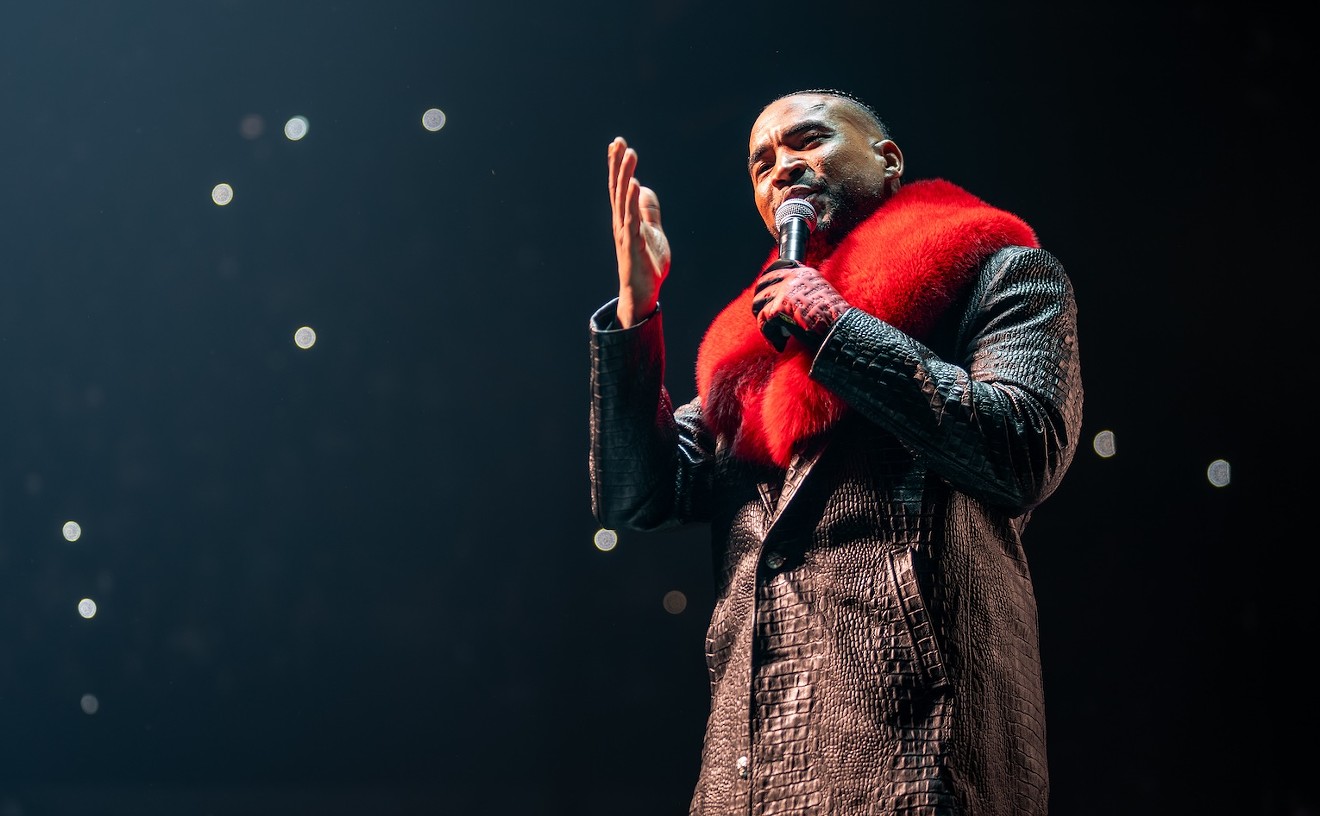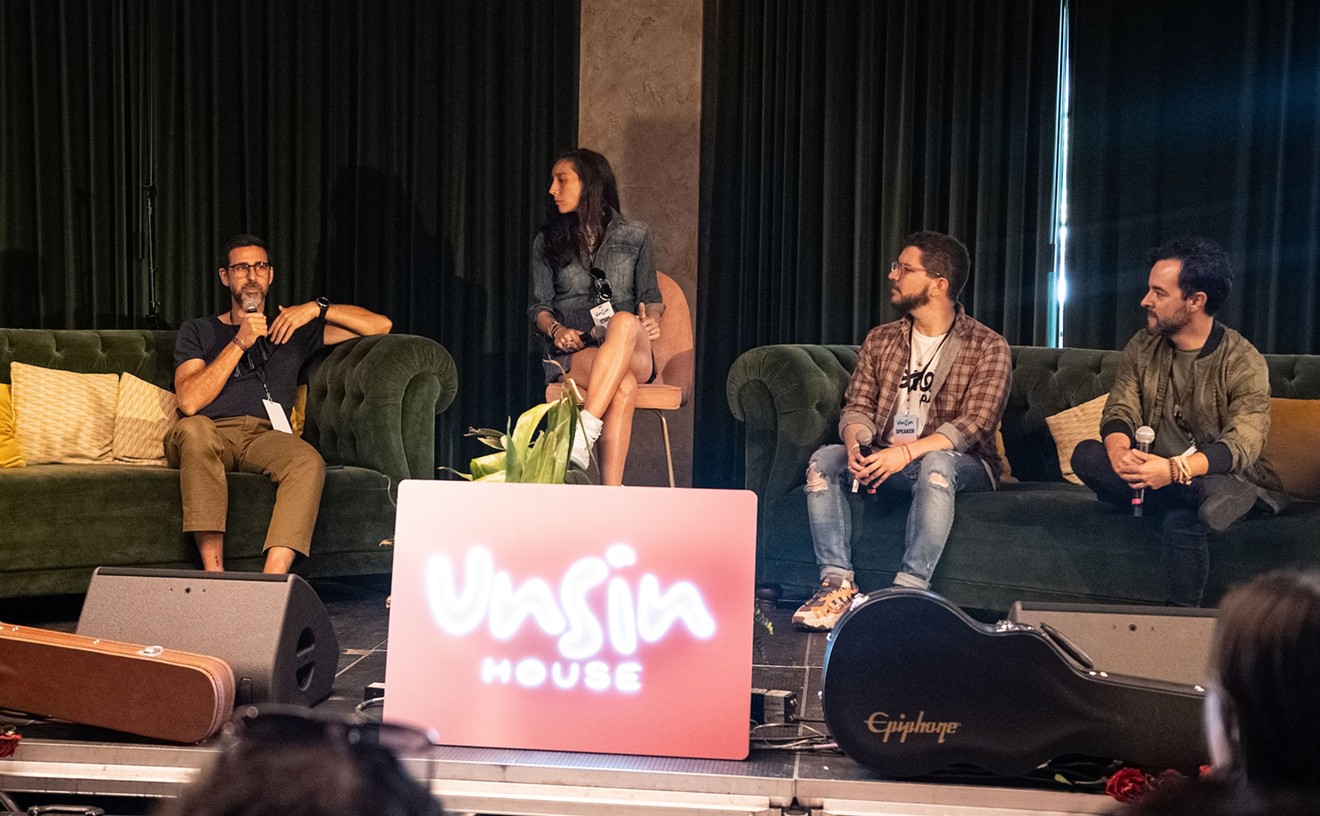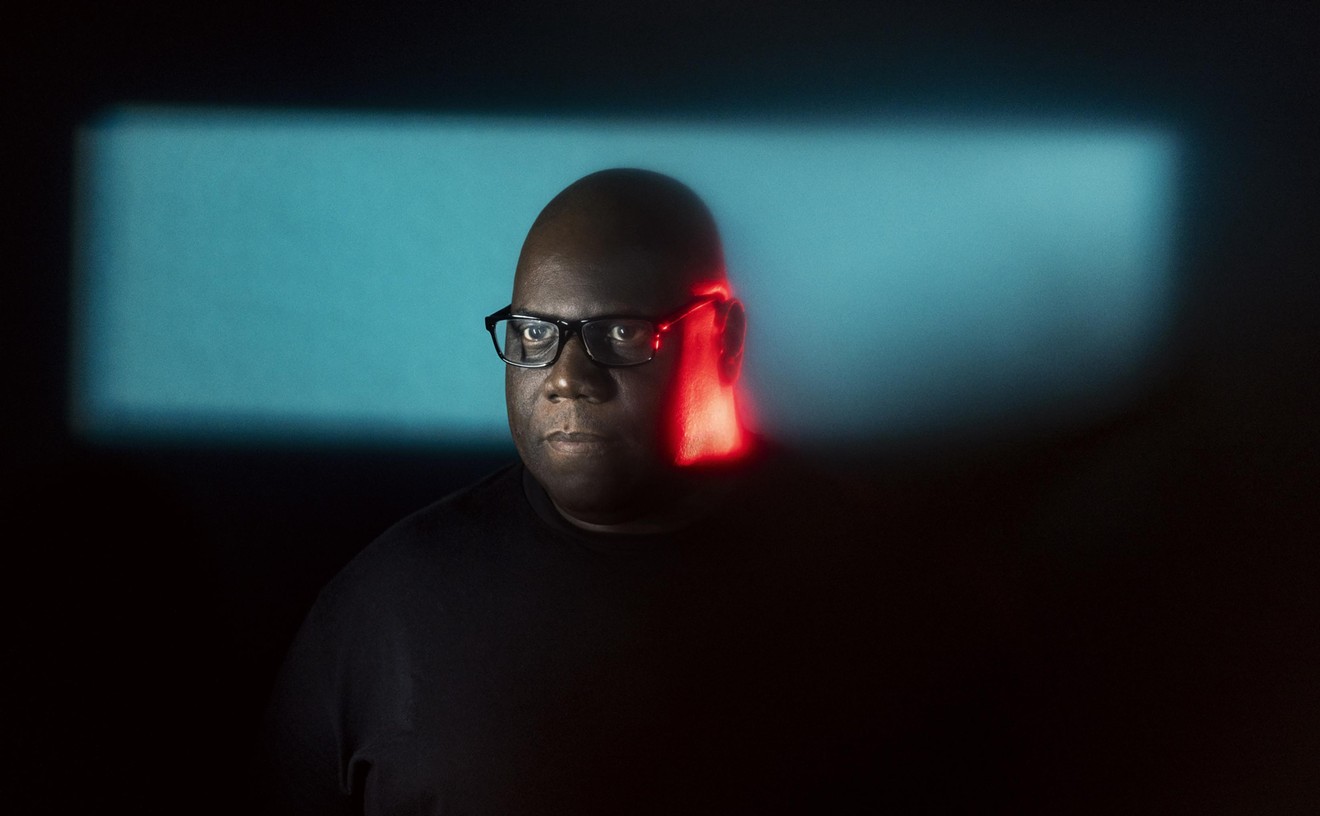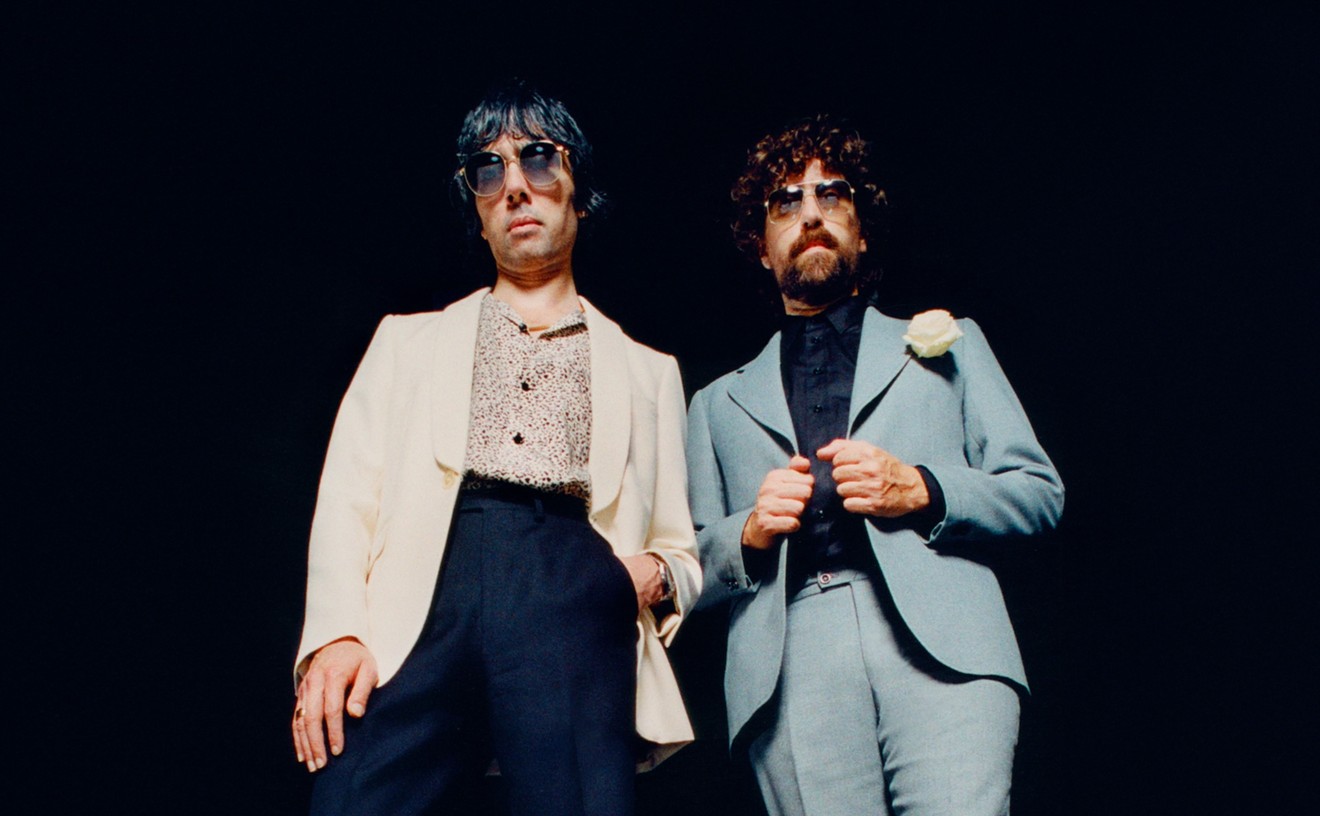Clearly Torres's life has changed considerably since he arrived in Miami four years ago with few possessions and only vague possibilities for employment. The products of consumer culture are apparent in his home, but his experience in the United States also comes through in his music, which of late has acquired a distinctly American tinge.
"As a result of direct contact with the United States, I'm aiming my playing more toward jazz," says Torres. "In Cuba I corresponded more to Cuban popular styles, to Cuban forms and rhythms, always with a general audience in mind. When I got to this country, I began to exploit my artistic potential a little more."
Torres does just that on Pepper Trombone, his second and latest album on RMM Records' Tropijazz imprint, and he covers ample territory. His trombone slides from bluesy wails to hectic jazz riffs, erupting into staccato blasts, then settling into sensuous, smoky tones. Backed by an outstanding quintet of Miami-based musicians from Cuba and Venezuela (including pianist Silvio Monasterio and drummer Carlos Salvador), Torres moves from standard jazz to the varied syncopated rhythms that fall within the far-reaching definition of Latin jazz.
Overall, the album probably has more appeal to jazz fans than lovers of traditional Latin music, but songs with a Cuban beat stand out. On the gorgeous "Rumba del Cajun," written by Torres, Alberto Palenzuela's exquisite conga drumming rides alongside a lush trombone melody. A saucy version of Ernesto Lecuona's Spanish-influenced classic "Malaguena" features punchy brass and piano improvisation, accented with vocals chanted by Torres and Elsa. On a jazzy samba called "Dream of Brazil," the trombonist is joined by Paquito D'Rivera playing a joyful clarinet. Trumpet player Arturo Sandoval also appears as a special guest, dropping in for a driving Latin jazz jam titled "Together Again."
About 30 years ago Torres, D'Rivera, and Sandoval (along with pianist Chucho Valdes) played side by side in the Orquesta Cubana de Musica Moderna, which the Cuban government formed in an attempt to get young Cubans interested in the music produced on the island. "The Modern Music Orchestra was created at a time when Cuban radio was totally closed to foreign music," explains Torres. "So all of the young people were tuning in to Florida stations on shortwave. The government started saying that this was causing an 'ideological penetration,' so they had to do something." Cuban officials decided to combat the problem by putting together a band that would have the same appeal for youth as the prohibited American music. This new national sound would incorporate elements of jazz, rock, and Cuban popular rhythms.
Torres was studying at the National School of Art in Havana when he was drafted into the band. He had come to the capital just a year earlier from Puerto Padre, a small town on the island's northeast coast. He was introduced to music by his father, a barber who played trumpet and trombone in the municipal orchestra. "Instruments were my toys," recalls Torres. "I always wanted to be a musician." As a child he picked up the basics of guitar, percussion, and piano on his own, and later attended the local music school. None of the teachers knew how to play trombone, however, so Torres ended up teaching himself, adapting the lessons given for clarinet. At the conservatory in Havana, Torres and his classmates, who included D'Rivera, were trained to play classical music. They were allowed to play nothing else.
"Paquito and I used to sneak out of school," recalls Torres with a mischievous smile. "We'd escape at night and go to the clubs and jam."
When Torres was drafted into the Orquesta Cubana de Musica Moderna, he was at last able to dip into the popular rhythms and jazz sounds that had always attracted him. "In Cuba I was doing a kind of improvisation similar to that in jazz, with Cuban rhythms," he explains. "Dance music is music that's based on very simple harmonies. I was doing a kind of popular music that was more complex."
Although the orchestra was a great success, the young musicians later went their separate ways. Valdes, D'Rivera, Sandoval, and others formed Irakere in 1973. Torres went off on his own. "They were more interested in pure jazz, and I always emphasized the elements of Cuban popular music," the trombonist says. "They didn't consider that what I was doing was jazz at all. I didn't find out until later that what I was playing was similar to what Mario Bauza and others were doing in New York -- it was what they call Latin jazz."
Irakere became phenomenally popular, lauded at home and abroad for its jazz experimentation. Torres did not do quite so well with his own band. Although he recorded albums that were well received by the public, he had problems with state officials, who controlled the careers of musicians more severely then they do today. He received offers to tour and record with Astor Piazzolla and other acclaimed artists, but for five years he was not allowed to travel. Soon, the work had all but dried up.
Torres says the restrictions placed on him came after a trip he took to Spain in 1972, when he spent New Year's Eve in the home of exiled musician Juanito Marquez, who now lives in Miami and works as a producer for Emilio Estefan. Torres made the mistake of telling the wrong person where had spent his holiday -- which was enough to make him persona non grata in Seventies Cuba.
Finally, in 1992, Torres was granted permission to return to Spain, where he had been offered a teaching position. He arranged the trip under the premise of a tour and took his whole band with him, including Elsa, who applied for a visa as a back-up singer, not as his wife. The band members returned to Cuba but the Torreses stayed on. They ended up in Miami in December of that year.
Since then, Torres has been on something of a crusade to foment a local Latin jazz scene. "I don't just live in Miami for the weather," he says. "There are so many great musicians here, there are great recording studios, why not do things here?" Torres's goal is to establish a regular venue where he and other Latin musicians can jam. That search has led him from Teatro Trail on SW Eighth Street to Centro Vasco to South Beach's Ritz Plaza Hotel. All of those ventures were short-lived, mostly because of inadequate advertising and club owners too impatient to let the events build a word-of-mouth following.
In 1995 RMM released his first U.S. album. Produced by Paquito D'Rivera and featuring Hilton Ruiz and other respected artists, the critically acclaimed Trombone Man has brought him enough recording and road gigs to pay the bills. He even played at one of Bill Clinton's inaugural parties. Torres is currently preparing a South American tour, and he will perform at the Heineken Jazz Festival in Puerto Rico in June.
Still, he hasn't given up on Miami. Last month he led a 22-piece orchestra that played at a black-tie party at Vizcaya hosted by the Little Havana Kiwanis Club. Dressed in white dinner jackets, the musicians played "Guantanamera" and other Cuban classics, filling the dance floor. On April 11 he opens for Tito Puente at the Broward Center for the Performing Arts. And starting next Thursday Torres and his quintet will be playing at Yuca every Thursday, featuring special guests such as conga player Giovanni Hidalgo and singer Israel Kantor. The bandleader says that he'll be playing some of the American-style jazz he's been favoring lately, but his idea is to spark a Latin jam session, like the ones that he and D'Rivera used to sneak off to in clubs in Havana.
"I've come to jazz from Cuban music," he says with pride. "I'm heir to a great legacy and I've always wanted to bring that to a wide audience. I'll never be a traitor to that cause.










